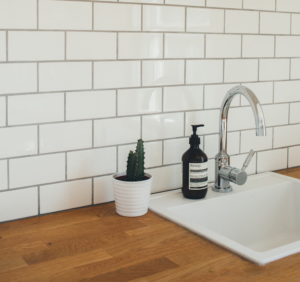Ceramic Tile: Is it the Healthy Choice for Your Home?

You might be surprised to learn that not all ceramic tile is created equal. In fact, some of it isn’t even made from ceramic! There are many different types of tile out there, and each material has its own pros and cons. Knowing the differences between them will help you make an informed decision about which kind of tile you want in your home. Read on for everything you need to know about the different kinds of tile—and which one is right for you!
What Is Ceramic Tile?
Ceramic wall tiles are made from clay fired at extremely high temperatures (around 2,000 degrees Fahrenheit). The hardness of ceramic makes it long-lasting in high-traffic areas, and it has a far better resistance to stains and staining than natural stone. Because they are water-soluble, ceramic tiles are not a good choice for bathroom floors, where they are likely to be exposed to a lot of moisture and regular cleaning with harsh chemicals. Ceramic tiles are available in many different colors, styles, and sizes.
Porcelain Tile
A porcelain tile is a type of ceramic tile, but not all ceramic tiles are porcelain. Porcelain is distinguished from other ceramics by its higher level of whiteness, translucency, and durability. It’s harder than most ceramics, and it’s less porous, which makes it a better choice for high-traffic use. Like ceramic tiles, porcelain tiles come in many different sizes, styles, and shades. They are often more expensive than ceramic tiles, but are generally considered to be a better value.
Ceramic and Porcelain Tiles Are Not Created Equal
Ceramic tiles are made from clay that is fired at a high enough temperature to fuse the minerals together and produce a hard, durable material. Porcelain tiles are made from the same minerals, but they are fired at a much higher temperature. This extra step produces a harder, more durable tile. Porcelain is also more translucent than ceramic, which gives it a slightly higher aesthetic value. Due to the extra steps involved in producing porcelain tiles, they are generally more expensive than ceramic tiles.
Natural Stone Tiles
Natural stone tiles, including granite, limestone, travertine, and marble, are among the most luxurious choices for your home. Their durability and aesthetic beauty make them a popular choice for kitchens and bathrooms. Natural stone is porous, so it should not be used in areas that are likely to be exposed to a lot of water or scrubbing, like a bathroom shower or bathroom floor. Natural stone tiles are often more expensive than ceramic or porcelain tiles. They are also more difficult to install, as they must be laid on a bed of sand and cement.
Solid Vinyl Tiles
Solid vinyl tiles are made from a vinyl-coated paper product that is glued onto a fiberboard backing. They come in a wide range of colors and patterns and are often used in commercial settings. These tiles are very durable and are often used in high-traffic commercial settings like gyms and lobbies. They are not porous and are very easy to clean. Solid vinyl tiles are usually less expensive than other types of tiles. They are also lightweight, making them easy to install. However, they do not have the same aesthetic value as ceramic or natural stone tiles.
Concrete Tiles
Concrete tiles are often used in outdoor settings because they are extremely durable and weather-resistant. They are less likely to chip or crack than other types of tiles, making them a good choice for outdoor patios or walkways. They are usually stained and sealed, so they have a more finished appearance than other outdoor tiles. Concrete tiles are also very easy to install. Like natural stone tiles, concrete tiles are porous, so they are not recommended for indoor use.
Vinyl Coated Tile
Vinyl-coated tiles are essentially a hybrid of ceramic and vinyl tiles. They are made from a vinyl-coated paper product, but they have a thicker backing and a more substantial feel than solid vinyl tiles. They are very durable and are often used in commercial settings. They are also easy to clean and are suitable for outdoor use. Vinyl coated tiles are generally less expensive than natural stone tiles, but more expensive than solid vinyl tiles. They have a more finished look than solid vinyl tiles and can be used as a substitute for ceramic tiles.
Summary
Ceramic tiles are one of the most popular choices for walls, but they are not the only option. Natural stone, concrete, and vinyl tiles are also popular choices. They all have their own advantages and disadvantages, so it’s important to understand the differences between them before making your selection. Ceramic tiles are made from fired clay, making them very durable and easy to clean. But they may stain more easily than natural stone tiles, which are more porous and harder to clean. When selecting your tile, remember that not all ceramic tiles are created equal. Be sure to select one that best suits your needs and aesthetic preferences.



